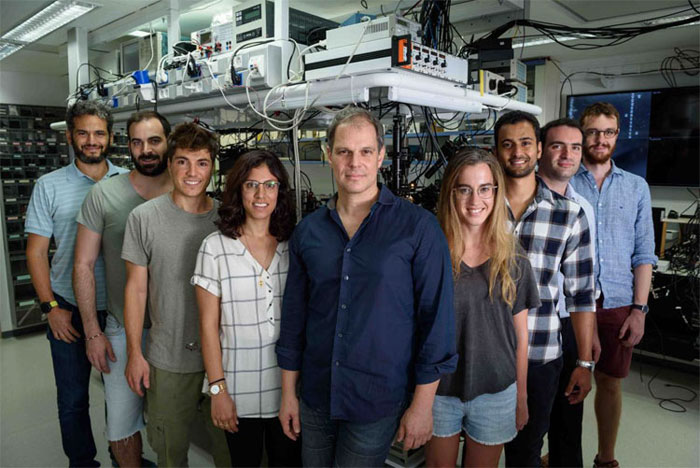Photonics HandbookTech Pulse
SWAP Gate Could Help in Scaling Quantum Computers
The quantum optics lab at the Weizmann Institute of Science has created a logic gate in which a photon and an atom can automatically exchange the information they carry. This advance could help in scaling up quantum computers for practical use.
Although small-scale quantum computers have been demonstrated, the challenge of scaling up these computers to millions of qubits remains. This is because, for the qubits to exist in a state of quantum superposition, they need to be isolated; and at the same time they need to interact and communicate with other qubits. Quantum superposition — a phenomenon in which qubits exist in several states at once — is what gives qubits the edge over classical computing, as a computer made of qubits could perform numerous computations in parallel.

A quantum gate between atoms and photons may help in scaling up quantum computers. Courtesy of the Weizmann Institute of Science.
The Weizmann team is investigating one possible solution to scaling up quantum computers — isolated modules with small numbers of qubits that would communicate with each other via optical links. The information stored in a material qubit (a single atom or ion) would be transferred to a flying qubit (a single photon). The photon would be sent through optical fibers to a distant material qubit and would transfer information to that qubit without allowing anything in the environment to decrypt the information.
The challenge in creating such a system is that single photons carry extremely small amounts of energy, and the minuscule systems comprising material qubits generally do not interact strongly with such weak light.
The team has set up an experiment coupling single atoms to unique micron-scale silica resonators on chips. Photons are sent directly to these resonators through special optical fibers, to create a logic gate in which information is exchanged between a flying qubit and a material qubit.

Professor Barak Dayan and his quantum optics lab group. From left: Gabi Guendelman, Dor Korn, Niv Drucker, Tal Ohana, Barak Dayan, Moran Netser, Ziva Aqua, Ori Mor, and Adrien Borne. Courtesy of the Weizmann Institute of Science.
“The photon carries one qubit, and the atom is a second qubit,” said professor Barak Dayan. “Each time the photon and the atom meet, they exchange the qubits between them automatically and simultaneously, and the photon then continues on its way with the new bit of information. In quantum mechanics, in which information cannot be copied or erased, this swapping of information is in fact the basic unit of reading and writing — the ‘native’ gate of quantum communication.”
This type of logic gate — known as a SWAP gate — could be used to exchange qubits both within and between quantum computers. As this gate needs no external control fields or management system, it could enable the construction of the quantum equivalent of very large-scale integration (VLSI) networks, according to the researchers.
“The SWAP gate we demonstrated is applicable to photonic communication between all types of matter-based qubits — not only atoms,” said Dayan. “We therefore believe that it will become an essential building block in the next generation of quantum computing systems.”
The research was published in Nature Physics (doi: 10.1038/s41567-018-0241-6).
Published: September 2018